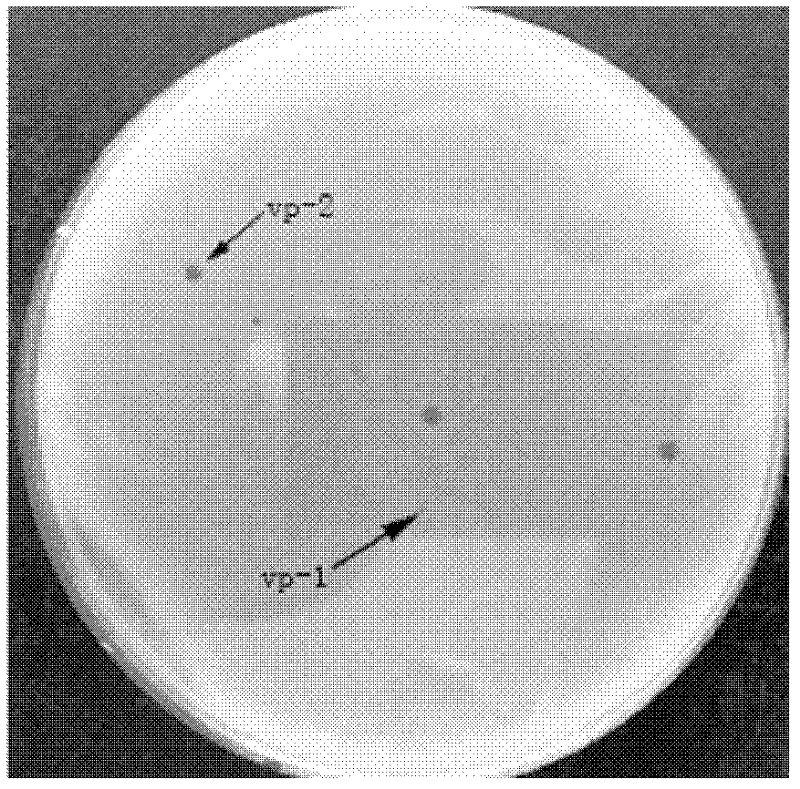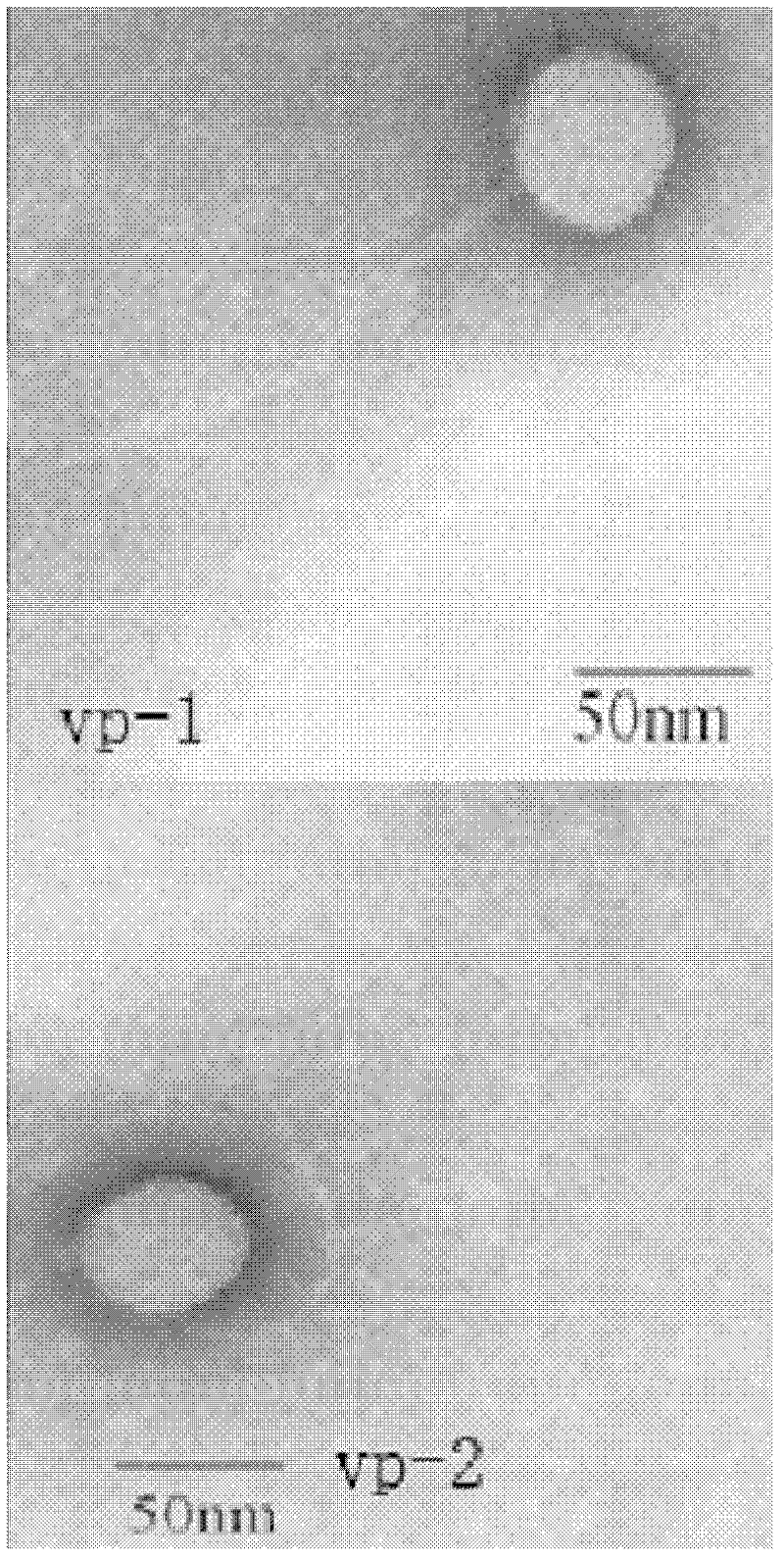Preparation of two lytic vibrio harveyi bacteriophage preparations, and application thereof
A Harvey Vibrio and phage technology, applied in the field of bioengineering, can solve problems such as drug residues, water pollution, food safety, etc.
- Summary
- Abstract
- Description
- Claims
- Application Information
AI Technical Summary
Problems solved by technology
Method used
Image
Examples
Embodiment 1
[0032] Embodiment 1, the separation and preparation of phage
[0033] (1) Preparation of host bacteria
[0034] Take out the Vibrio Harvey which has been identified and inoculated in 2216E solid medium and stored in a refrigerator at 4°C for standby, culture overnight at 37°C, pick a single colony, inoculate in 2216E liquid medium, and culture at 37°C for 6 hours with shaking Later, it is used to isolate phage.
[0035] (2) Water samples and their treatment
[0036] Take 50ml of wastewater and pretreat the water sample: add CaCl 2 , MgCl 2 , so that the final concentration is 1mmol / L, and the effect is about 10min. The purpose is to make the phage more easily adsorbed on the surface of the pathogenic bacteria.
[0037] (3) Phage isolation
[0038] Centrifuge the above-mentioned pretreated water sample with a centrifuge at 10,000 rpm for 5 minutes to collect the supernatant; filter the supernatant through a 0.22 μm disposable filter membrane to remove bacteria, impurities ...
Embodiment 2
[0053] Embodiment 2, PEG 8000 precipitation phage particle
[0054] (1) Take 20 mL of the overnight cultured host bacteria solution, transfer it to 1 L of liquid 2216E, and culture it with shaking at 37°C until the initial logarithmic growth stage, about 12 hours;
[0055] (2) Add phage liquid so that the multiplicity of infection (the ratio of the number of infected phages to the number of host bacteria) is about 0.01, and continue shaking culture at 37°C for 24 hours, and the rotation speed is 150rpm;
[0056] (3) Centrifuge the above mixture at 10,000 rpm at 4°C for 10 min to remove bacterial debris, then measure the supernatant, add DNase I and RNase A to the final concentration of 1 μg / mL, and incubate at room temperature for 30 min;
[0057] (4) Add 29.2 g of solid NaCl to 500 ml of culture, stir to dissolve it, and then place the culture in an ice bath for 1 hour. Adding NaCl can promote the sedimentation of bacterial fragments and miscellaneous proteins, which is also ...
Embodiment 3
[0064] Embodiment 3, in vitro antibacterial experiment
[0065] The experiment was set up as 4 groups, and 4 50ml centrifuge tubes were taken and marked as A, B, C, and D respectively; A was the negative control group, B was the antibiotic group, and C was the phage group. Add 40ml 2216E liquid culture medium, 1ml bacterial solution (concentration is 10 8 PFU / ml), 1ml PBS; add 40ml 2216E liquid culture medium, 1ml bacterial solution (concentration is 10 8 PFU / ml), 1ml kanamycin sulfate (concentration is 4mg / ml); C also added 40ml 2216E liquid medium, 1ml bacterial liquid, 1ml phage suspension, respectively 500μl vp-1 and 500μl vp-2, Potency is 1×10 8 pfu / ml; D is a blank control, only 40ml of 2216E medium was added. After shaking for 10 minutes, put it into a microplate reader to measure OD 600 Record the value; put it in a shaker at 37°C and cultivate it, take it out every half hour to measure the OD 600 value and record it. by OD 600 The value is the ordinate, and the...
PUM
 Login to View More
Login to View More Abstract
Description
Claims
Application Information
 Login to View More
Login to View More - R&D
- Intellectual Property
- Life Sciences
- Materials
- Tech Scout
- Unparalleled Data Quality
- Higher Quality Content
- 60% Fewer Hallucinations
Browse by: Latest US Patents, China's latest patents, Technical Efficacy Thesaurus, Application Domain, Technology Topic, Popular Technical Reports.
© 2025 PatSnap. All rights reserved.Legal|Privacy policy|Modern Slavery Act Transparency Statement|Sitemap|About US| Contact US: help@patsnap.com



